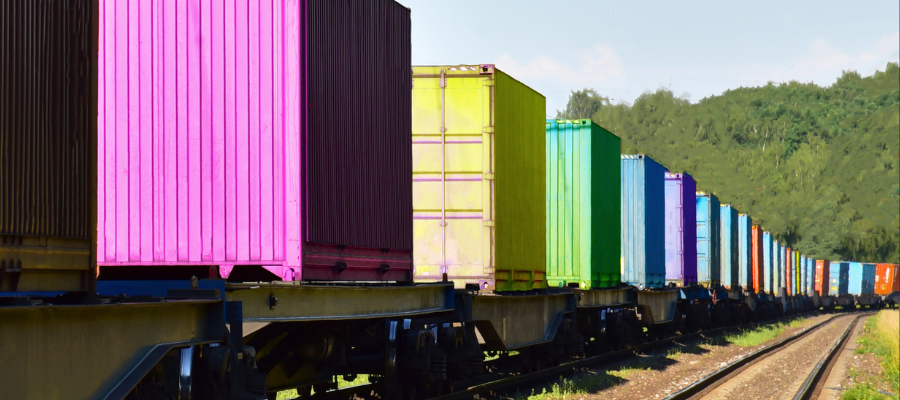🕒 Article read time: 4 mins
Rail freight: carrying the load

Rail freight has always been an integral part of the supply chain, allowing businesses to deliver goods – particularly bulky or heavy commodities - at a competitive price, on a reliable service overnight.
With each freight train reducing emissions by as much as 76% when compared to road usage, the argument for a shift from road to rail is compelling, with the government’s Mode Shift Revenue Support (MSRS) grant offering funding to companies that are looking to make the switch from road to rail or water.
RAIL FREIGHT GOOD FOR BULK HANDLING
Each freight train can do the job of up to 76 HGVs, making rail freight a good alternative for bulk handling. This brings many social and environmental benefits; reducing the number of HGVs on the UK’s busy roads can result in reduced emissions and traffic, therefore further improving air quality. And the rail network can ensure that goods are delivered into city centres without traffic delays or restrictions in access or parking.
Where large construction projects are greenlit, which will require a high volume of construction materials such as cement and aggregates, rail freight is ideally placed to deliver the necessary heavy or bulky loads direct; for example, according to Network Rail, 40% of all aggregates used in London are delivered by rail.
INFRASTRUCTURE CHALLENGES
However, there are a number of infrastructure challenges that must be addressed when transporting bulk materials via rail in order to maximise the potential of using rail to transport freight. Many track structures, including those across London, have been in use since the nineteenth century and as a result, Heavy Axle Weight restrictions limit the movement of heavier trains across the network. In some areas, this can result in speed restrictions of 20mph being implemented, which in turn lead to bottlenecks and capacity challenges. It is vital that tracks and supporting structures are strengthened to accommodate the heavier freight trains, and funding is made available for maintenance regular network maintenance. Focus must also be placed on gauge enhancements to alleviate constraints caused by infrastructure challenges such as tunnel sizes and platform lengths.
RAIL FREIGHT GROWTH NEEDED
The quantity of freight moved by rail has stagnated in recent years, and Logistics UK is keen to encourage more freight to be moved by rail. However, whether this can be achieved depends on the ongoing enhancement of network capacity, and the capability to accommodate freight movements. The recent news that the government’s latest Transport Bill is to be delayed is a huge blow for rail freight; the industry needs a rail freight growth target to be set out in law, to raise awareness of and generate trial of the sector by industry. With net-zero targets drawing closer, and the environmental benefits rail freight offers clear, Logistics UK is urging government to proceed at pace with provision of the vital guidance and investments needed to help the sector grow.
*www.logistics.org.uk/rail
Published On: 27/10/2022 15:45:00

Comments Section
If you are a Logistics UK member login to add comments.